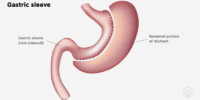Survival Analysis: A Self-Learning Text by David Kleinbaum and Mitchel Klein – Summary and Review

Survival Analysis: A Self-Learning Text by David Kleinbaum and Mitchel Klein is a comprehensive guide to understanding and navigating the complexities of survival data.
It offers a pragmatic approach to dissecting survival analysis, going beyond theory to provide practical insights.
This seminal text is a scholarly masterpiece that illuminates the path to unraveling the intricacies of survival analysis with clarity and precision.
Key Takeaways
- Comprehensive coverage of survival analysis methods by experienced authors.
- Clear explanations and practical examples enhance understanding.
- Real-life cases and illustrations make complex concepts tangible.
- Interactive learning tools aid in applying theoretical knowledge to practical scenarios.
Authors' Background and Expertise
With a wealth of experience in the field of survival analysis and a deep understanding of statistical methods, the authors of the textbook bring a unique blend of expertise to their work.
David Kleinbaum and Mitchel Klein, the minds behind this enlightening text, possess impressive educational backgrounds that have certainly shaped their proficiency in the subject matter. Kleinbaum, known for his groundbreaking work in epidemiology and biostatistics, holds a Ph.D. in Biostatistics from the University of North Carolina.
On the other hand, Klein, a respected figure in the field of public health, completed his Ph.D. in epidemiology at the University of Pittsburgh. Their academic achievements aren't merely accolades but a confirmation of their dedication to understanding the nuances of survival analysis.
Through their collaborative effort, readers are exposed to a wealth of knowledge that isn't only informative but also empowering.
Overview of Survival Analysis Content
The textbook on survival analysis offers a thorough exploration of essential statistical methods and principles crucial for understanding survival data. Survival analysis techniques and applications are presented in a detailed manner, allowing readers to grasp the intricacies of this field.
Understanding survival curves is a key focus, enabling individuals to interpret data effectively. The book explores hazard rates, providing insights into the probability of an event occurring at a specific time point.
Through practical examples and clear explanations, readers can apply these concepts to real-world scenarios, enhancing their analytical skills. The content not only educates but also empowers individuals to navigate complex survival data with confidence and precision.
Clear Explanations and Examples
Within the domain of survival analysis, the value of clear explanations and examples can't be overstated. By offering simplified concepts with relatable examples, complex methodologies become more accessible to learners.
Practical illustration of methods and clarity through real-world cases provide a solid foundation for understanding the intricacies of survival analysis.
Simplified Concepts With Examples
Survival analysis introduces the fundamental concept of analyzing time-to-event data, showcasing the intricate interplay between event occurrence and time progression.
- Simplified Concepts: The essence lies in studying time until an event of interest transpires.
- Case Studies: Real-world scenarios aid in grasping the application of survival analysis.
- Practical Examples: Instances like patient survival post-treatment illuminate the methodology.
- Understanding Survival: It explores predicting time for an event based on various factors.
- Application Clarity: By simplifying complex data, survival analysis reveals patterns for informed decision-making.
Practical Illustration of Methods
Introducing practical methods with clear explanations and examples illuminates the application of survival analysis in real-world contexts. By delving into case studies, learners grasp the intricacies of survival rates and how various factors impact them.
Through these real-life examples, the complexities of survival analysis become more tangible and easier to comprehend. Case studies offer a bridge between theory and practical application, allowing individuals to witness the methodology in action.
Understanding how survival rates are calculated and interpreted within different scenarios provides a deeper insight into the significance of this analytical approach. Kleinbaum and Klein's text effectively brings these concepts to life, empowering readers to navigate the world of survival analysis with confidence and proficiency.
Clarity Through Real-World Cases
Embodying the essence of real-world complexity, the text artfully elucidates survival analysis through vivid case studies and practical examples. Real life scenarios are expertly woven into the narrative, providing a tangible understanding of how survival analysis concepts manifest in the world.
The application focus of the text guarantees that readers grasp not just the theoretical underpinnings but also how to practically apply these concepts in their own research or professional settings. Through a series of engaging examples, the authors demonstrate the versatility and power of survival analysis in various contexts, making it an invaluable resource for those seeking a deeper comprehension of this statistical method.
- Real-life scenarios bring concepts to life
- Practical examples aid in understanding
- Application focus enhances relevance
- Engaging case studies provide context
- Demonstrates versatility and power
Practical Applications in Research
In the domain of research, understanding the intricacies of survival analysis involves careful consideration of research design, meticulous data collection methods, and the adept use of various analysis techniques.
These elements are pivotal in ensuring the validity and reliability of the study's findings.
Research Design Considerations
Why must researchers meticulously consider their research design when initiating a new study? Research design is the blueprint upon which the entire study is built. It dictates the accuracy, reliability, and validity of the findings. Here are some key considerations:
- Sample Size: Adequate sample size guarantees the study has enough statistical power to detect meaningful effects.
- Censoring Mechanism: Understanding how censoring will be handled is important in survival analysis to prevent bias.
- Randomization: Random allocation of participants helps in minimizing bias and ensuring generalizability.
- Control Group: Having a control group allows for comparison and helps establish causality.
- Ethical Considerations: Ensuring ethical standards are met protects the rights and well-being of participants and upholds the integrity of the study.
Data Collection Methods
Researchers meticulously craft their data collection methods to confirm the integrity and robustness of their research findings in survival analysis studies. Data interpretation and study design play pivotal roles in shaping the outcome of statistical modeling, particularly when analyzing survival rates.
The precision in selecting data collection techniques guarantees that the information gathered is relevant, reliable, and reflective of the phenomenon under investigation. By employing systematic approaches to gather data, researchers can enhance the accuracy of their results and draw meaningful conclusions that contribute to the existing body of knowledge.
Understanding the intricacies of data collection methods is essential for conducting thorough survival analysis studies and for producing insightful findings that can inform decision-making processes in various fields.
Analysis Techniques Used
Crafting meticulous analysis techniques in survival analysis studies is akin to sculpting a masterpiece that reveals the intricate relationships between variables and uncovers the essence of survival rates. When delving into the domain of survival analysis, researchers often employ a variety of sophisticated methods to extract meaningful insights.
Here are key techniques utilized in this domain:
- Time to event analysis: Revealing the temporal aspect of survival data.
- Survival curves: Illustrating the probability of survival over time.
- Censoring: Accounting for incomplete observations in the dataset.
- Hazard rates: Estimating the instantaneous risk of an event occurring.
- Multivariate analysis: Exploring the impact of multiple variables on survival outcomes.
Exercises and Self-Assessment Tools
Incorporating interactive exercises and self-assessment tools can greatly enhance the learning experience for students studying survival analysis. By engaging in interactive exercises and quizzes, students can apply theoretical concepts to practical scenarios, reinforcing their understanding and retention of complex survival analysis techniques. These activities not only make learning enjoyable but also foster critical thinking and problem-solving skills essential for mastering the subject.
Additionally, self-assessment tools provide students with the opportunity to track their progress, identify areas for improvement, and tailor their study strategies accordingly. Progress tracking enables learners to monitor their development over time, set achievable goals, and stay motivated throughout their academic journey. By offering a structured approach to self-evaluation, these tools empower students to take ownership of their learning process and make steady advancements in their comprehension of survival analysis principles.
Essentially, the integration of interactive exercises and self-assessment tools cultivates a dynamic and enriching educational environment conducive to holistic growth and development.
Comparison With Other Texts
When comparing this textbook on survival analysis with others in the field, one quickly recognizes its unique approach to presenting complex concepts in a digestible and engaging manner.
- Textbook comparison:
- The text stands out for its clarity in explaining intricate statistical methods.
- It excels in providing real-world examples that enhance understanding.
- The integration of software applications adds a practical dimension to theoretical concepts.
- The inclusion of case studies offers a hands-on learning experience.
- The thorough coverage of advanced topics sets it apart from standard textbooks.
- Learning resources:
- The supplementary materials, including datasets and solutions, aid in practical application.
- The online resources provide additional support and opportunities for interactive learning.
- The exercises and self-assessment tools foster a deeper understanding of the material.
- The structured approach to learning guarantees a progressive and holistic grasp of survival analysis.
- The inclusion of diverse learning aids caters to various learning styles and preferences.
Reader-Friendly Format and Structure
With a seamless blend of intuitive visuals and concise explanations, the textbook's reader-friendly format effortlessly guides learners through the intricacies of survival analysis. The incorporation of visual aids such as graphs, charts, and tables enhances the understanding of complex concepts, making the material more accessible and engaging. These visual representations help learners grasp key ideas quickly and retain them effectively, fostering a deeper comprehension of the subject matter.
Moreover, the inclusion of interactive quizzes provides an opportunity for active learning, allowing readers to test their knowledge and reinforce their understanding of survival analysis principles. By offering this hands-on approach to learning, the textbook encourages readers to engage with the material actively, promoting a more profound and lasting retention of key concepts.
Recommendations and Final Thoughts
Guiding learners towards a more profound understanding of survival analysis, the textbook's recommendations offer invaluable insights and reflections on mastering this complex subject. Here are some key takeaways to bear in mind:
- Practical Applications: Encouraging the application of theoretical knowledge in real-world scenarios enhances comprehension and retention.
- Interactive Learning: Engaging with case studies and exercises fosters a deeper understanding of the material through active participation.
- Continuous Practice: Regular practice is essential to solidifying concepts and improving problem-solving skills.
- Seeking Guidance: Don't hesitate to seek clarification on challenging topics from instructors or peers to overcome hurdles efficiently.
- Reflect and Review: Regularly reflecting on your progress and revisiting previous lessons can help reinforce learning and identify areas for improvement.
Frequently Asked Questions
Can You Provide Additional Resources for Further Study on Survival Analysis Beyond What Is Mentioned in the Book?
For those seeking more knowledge on survival analysis, additional resources can be found online. Further reading recommendations include specialized academic journals, advanced textbooks, and online courses that explore deeper into this analytical method.
How Do the Authors Approach the Topic of Handling Missing Data in Survival Analysis?
In their approach to handling missing data in survival analysis, the authors emphasize thoroughness and sensitivity. They advocate for transparent reporting, multiple imputation techniques, and robust sensitivity analyses to guarantee the validity and reliability of findings.
Are There Any Limitations or Criticisms of the Methods Presented in the Book That Readers Should Be Aware Of?
Limitations in the book's methods may include oversimplification of complex concepts or lack of real-world application guidance. Criticisms might arise from differing statistical preferences or the need for more diverse examples.
How Does the Book Address the Issue of Censoring in Survival Analysis and Its Impact on Results?
In survival analysis techniques, understanding the impact of censoring is crucial. The book elegantly addresses this issue by illuminating how censoring influences results, empowering readers to navigate this challenge effectively and make informed decisions.
Are There Any Real-World Case Studies or Applications of Survival Analysis Discussed in the Book That Are Not Covered in the Summary?
Real world applications and case studies in the book provide practical insights into applying survival analysis. These examples offer a glimpse into how this methodology unfolds in diverse scenarios, enhancing the reader's understanding and appreciation.











